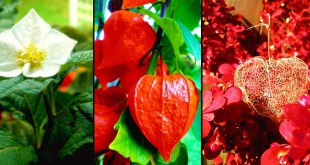 Shamrock — Shamrock is the common name for several unrelated herbaceous plants with trifoliate leaves. White clover, Trifolium repens forma minus, family Leguminosae, was the original shamrock of Ireland; Trifolium procumbens is now commonly used. Saint Patrick used the shamrock leaf to symbolize the Trinity, and a trifoliate leaf of this shamrock is worn by the Irish on March 17 to commemorate Saint Patrick’s Day. Other species of Trifolium are often referred to as shamrocks, as is the species Oxalis acetosella in the family Oxalidaceae, a favorite and easily cultured plant for a window garden.
Shamrock — Shamrock is the common name for several unrelated herbaceous plants with trifoliate leaves. White clover, Trifolium repens forma minus, family Leguminosae, was the original shamrock of Ireland; Trifolium procumbens is now commonly used. Saint Patrick used the shamrock leaf to symbolize the Trinity, and a trifoliate leaf of this shamrock is worn by the Irish on March 17 to commemorate Saint Patrick’s Day. Other species of Trifolium are often referred to as shamrocks, as is the species Oxalis acetosella in the family Oxalidaceae, a favorite and easily cultured plant for a window garden.
other three-leafed plants — such as black medic (Medicago lupulina), red clover (Trifolium pratense), and Common wood sorrel (genus Oxalis) — are sometimes designated as shamrocks. The shamrock was traditionally used for its medical properties and was a popular motif in Victorian times. It is also a common way to represent St. Patrick’s Day, a holiday celebrated on March 17. Shamrocks are said to bring good luck.
 Kids Portal For Parents India Kids Network
Kids Portal For Parents India Kids Network




